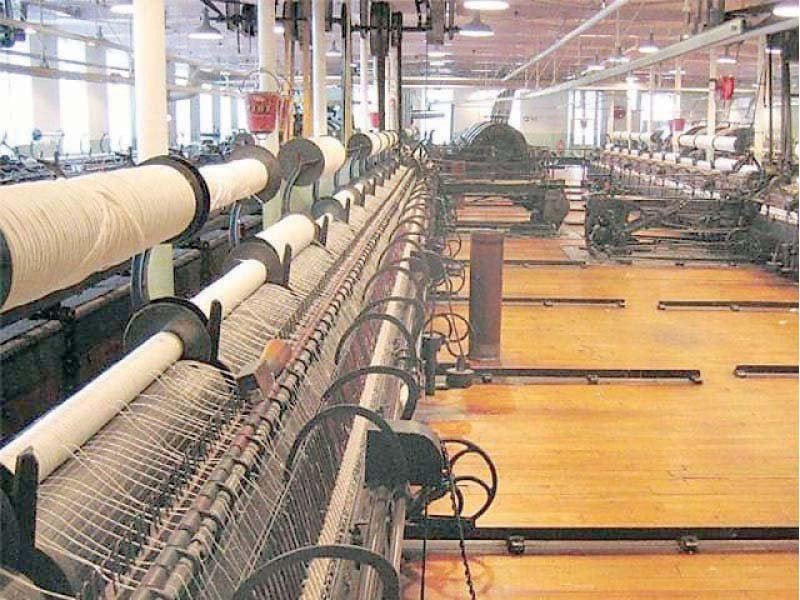Why is Pakistan’s textile industry going to dogs?
As Pakistan’s textile industry loses momentum to more nimble Asian rivals, Lubna Babar, a worker in a textile mill, was laid off at the beginning of the year.
She is one of the numerous victims of the crisis that the nation’s textile and apparel industry is currently experiencing.
Talking to AFP, the 43-year-old from Lahore said: “When you lose your job, your life comes to a close. We’ve been working in factories for years… the day you get sacked, the story ends there.”
Like other industrialized countries, Pakistan has experienced a slowdown in global consumption and an increase in energy prices as a result of the conflict in Ukraine.
However, the deteriorating status of the economy and months of political upheaval have made it much more challenging for Pakistan’s textile industry, which accounts for 60% of its exports.
Why is Pakistan’s textile industry going to dogs?
At the end of the coronavirus epidemic, Pakistan’s industry benefited from government financial assistance, including lower energy prices, and was released from restrictions earlier than rival nations India and Bangladesh.
In 2022-2023, however, textile exports fell by 15% to $16.5 billion.
“Two years ago, we were on a very high growth trajectory… we were confident that our exports this year would go to $25 billion,” said Hamid Zaman, managing director of Sarena Textile Industries.
“Unfortunately, when you have political instability and things are not clear, and the policies of the government are reversed, this whole thing has gone into a tailspin,” he told AFP.
When Imran Khan was ousted as prime minister by a vote of no-confidence in April of last year, the political shambles officially began.
In May, he was imprisoned for attempting to mobilize popular support for a movement to call for an early election, which sparked unrest that was only put to an end by a harsh crackdown on his party and its followers.
On Saturday, he was found guilty of graft and given a three-year prison term.
Factories shutting down
Of the 20 million industrial workers in the country, the textile and apparel industry employs about 40% of them.
The primary export destinations are the US, EU, UK, Turkey, and UAE, where cotton fabrics, knitwear, bed linen, towels, and ready-made clothing are sold to well-known international companies including Zara, H&M, Adidas, John Lewis, Target, and Macy’s.
However, a large number of factories have recently shut down, at least temporarily, or are no longer operating at full capacity.
Maybe 25 to 30 percent of all textile factories have shut down. Around 700,000 jobs are estimated to have been lost in the last year or year and a half, according to Zaman.
Babar was acutely aware of this since he had applied for jobs at other factories, but those companies were also firing workers.
They claimed that they were no longer getting orders from outside the country, she said.
The production of cotton in Pakistan reached an all-time low following the severe floods in the summer of 2022.
The government’s ban on imports, established to protect its foreign exchange reserves, prevented the textile industry from making up the difference by purchasing from overseas.
Thousands of containers containing equipment and raw materials needed for the nation’s industries were stalled for months in Karachi’s southern port.
A large increase in the cost of capital was also experienced by the textile industry, which had to deal with interest rates of more than 20% in order to contain record-breaking inflation.
‘Not a solution’
Pakistan finally managed to consolidate its foreign exchange reserves with the approval in mid-July of a $3 billion loan from the International Monetary Fund (IMF) and additional assistance from China, Saudi Arabia, and the United Arab Emirates.
“But that’s not a solution, it´s just getting deeper and deeper into debt,” said Kamran Arshad, managing director of Ghazi Fabrics International.
“The only way forward is enhancing Pakistan´s exports and creating an environment that is investor-friendly that would incentivize industrial production and activity,” he added.
One of the conditions of the IMF bailout was an end to subsidies on energy, leading to a sharp rise in the cost of electricity, which affects the competitiveness of textile companies.
“Our biggest challenge going forward is having energy prices that are substantially higher than those of India, Bangladesh, Sri Lanka, Vietnam, and China,” said Arshad.
“We’re not asking for subsidies. Realistically we are asking for regionally competitive energy prices.”
In the face of these challenges, the country´s textile manufacturers have lost customers globally.
“Pakistan’s overall market share in the textile and garment industry was nearly 2.25% about two years ago. Now it’s down to around 1.7%,” said Aamir Fayyaz Sheikh, CEO of Kohinoor Mills.
Sheikh sees some hope if the political situation settles following an election due before the end of the year.
“After the elections, there will be more political clarity and that will help bring more economic stability,” he said.
But for ordinary workers like Babar, there is little light at the end of the tunnel.
“Life is getting harder every day,” said the mother of three.
“We cook once and make it last for two days. And if we don’t have any food, we make do, without complaining.”
